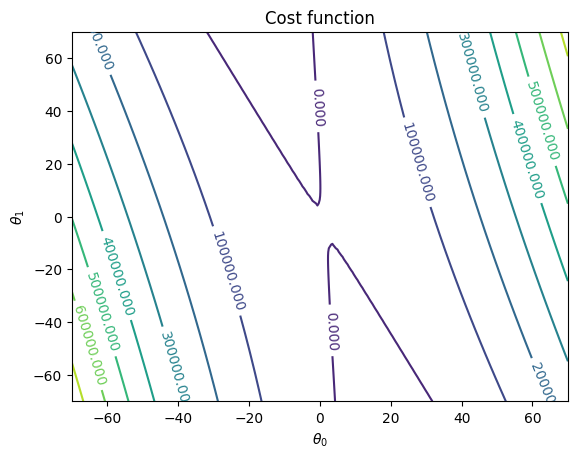Cost Function Newton-Raphson#
Suppose we have a cost function for producing a product that depends on two variables, \(x\) and \(y\), given by:
Find the values of \(x\) and \(y\) that minimize the cost function using the Newton-Raphson method. Choose an initial guess for the root, (x0, y0) = (1, 1).
ANSWER Suppose we have a cost function for producing a product that depends on two variables, x and y, given by:
We want to find the values of x and y that minimize the cost function using the Newton-Raphson method.
Write the cost function in the form F(x,y) = 0:
Find the Jacobian matrix of F:
Choose an initial guess for the root, (x0, y0) = (1, 1).
Use the iterative formula for the Newton-Raphson method:
Repeat step 4 with (x1, y1) as the new initial guess until the desired level of accuracy is reached.
import numpy as np
def cost_function(x):
# cost function (100x^2 + 50xy + 2y^2 - 100x - 50y + 200)
return 100*x[0]**2 + 50*x[0]*x[1] + 2*x[1]**2 - 100*x[0] - 50*x[1] + 200
def gradient(x):
# Calculate the gradient of the cost function.
# For example: return np.array([2 * x[0], 2 * x[1]])
return np.array([200 * x[0]+50*x[1]-100, 50 * x[0]+4*x[1]-50]) # Partial derivative of f with respect to x
def hessian(x):
# Calculate the Hessian matrix of the cost function.
return np.array([[200, 50], [50, 4]])
def newton_raphson(initial_guess, max_iterations, tolerance):
x = initial_guess
for iteration in range(max_iterations):
grad = gradient(x)
hess = hessian(x)
print(grad)
print(hess)
if np.linalg.det(hess) == 0:
print("Hessian matrix is singular. Unable to continue.")
break
delta_x = -np.linalg.inv(hess).dot(grad)
x = x + delta_x
if np.linalg.norm(delta_x) < tolerance:
print(f"Converged to solution after {iteration} iterations.")
break
return x
# Set initial guess, maximum iterations, and tolerance
initial_guess = np.array([1.0, 1.0])
max_iterations = 2
tolerance = 1e-6
# Call the Newton-Raphson method
result = newton_raphson(initial_guess, max_iterations, tolerance)
print("Optimal solution:", result)
print("Minimum cost:", cost_function(result))
[150. 4.]
[[200 50]
[ 50 4]]
[0. 0.]
[[200 50]
[ 50 4]]
Converged to solution after 1 iterations.
Optimal solution: [ 1.23529412 -2.94117647]
Minimum cost: 211.76470588235296
import matplotlib.pyplot as plt
x = np.linspace(-70, 70, 100)
y = np.linspace(-70, 70, 100)
X = np.meshgrid(x , y)
#theta_hist_array=np.array(theta_history)
cost_values = cost_function(X)
fig, ax = plt.subplots()
CS = ax.contour(X[0],X[1], cost_values)
ax.clabel(CS, inline=True, fontsize=10)
#ax.plot(theta_hist_array[:,0],theta_hist_array[:,1],'go')
ax.set_title('Cost function')
ax.set_xlabel(r'$\theta_0$')
ax.set_ylabel(r'$\theta_1$')
plt.show()

hess = hessian([10,10])
np.linalg.inv(hess)
array([[-0.00235294, 0.02941176],
[ 0.02941176, -0.11764706]])
grad = gradient([10,10])
delta_x = -np.linalg.inv(hess).dot(grad)
A=[10,10] + delta_x
hess = hessian(A)
grad = gradient(A)
delta_x = -np.linalg.inv(hess).dot(grad)
A+ delta_x
array([ 1.23529412, -2.94117647])
A
array([ 1.23529412, -2.94117647])

